Scouring pads are the preferred scrubbing solution in commercial kitchens. Their open weave construction allows for easy rinsing and efficient cleaning.
Why not use sponges in commercial kitchens? Sponges are more likely to harbor bacteria and are more difficult to clean than scouring pads. For this reason, sponges aren’t typically considered a safe option for cleaning in restaurants.
Now that you know why scouring pads are the right choice, you should also know that scouring pads come in several types; heavy-duty pads will clean your china but they can also leave behind ugly scratches. Our handy guide below will help you pick which scouring pad among the Scotch-Brite™ Professional line you need in your commercial kitchen.
Table of Contents
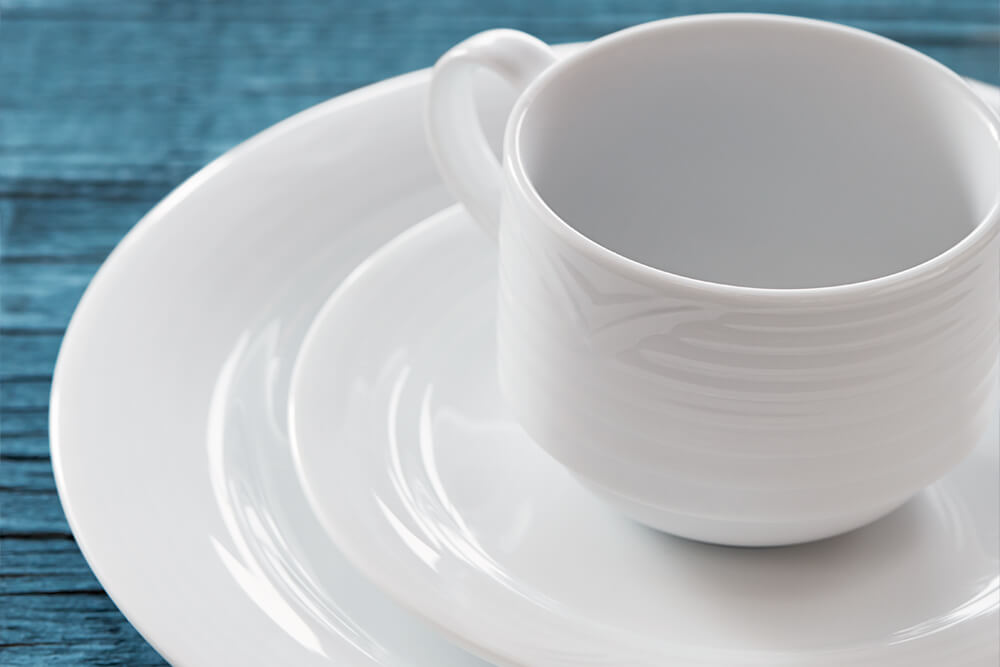
How to Clean China
China is one of the most popular and versatile choices for dinnerware and servingware. Varieties include fine china, bone china, porcelain, and ceramic dishware.
Tips On Cleaning China
- Clean china immediately after use to reduce staining and protein build-up.
- Heavy protein build-up (like dry eggs) will tempt people to use a more heavy-duty scouring pad than they should, which will scrub the glaze off china.
- Only use light-duty, non-abrasive scouring pads that won’t leave scratches or scuffs.
- Rinse with hot water.
- Air-dry in a drying rack.
- Avoid drying with a soft towel since towels can carry bacteria.
Recommended China Cleaning Products

#2000HEX

#9000

#9030
How to Clean Melamine Dinnerware
Melamine is a popular choice for restaurants due to its light weight, durability, cost, and increasingly stylish patterns. Melamine is made from wood fibers, which means it carries similar wood properties to be aware of when cleaning. And remember, melamine is not generally considered microwave-safe.
Tips on Cleaning Melamine Dinnerware
- Melamine products should be generally handled like china.
- Clean immediately after use to avoid staining and protein buildup.
- Melamine can be de-stained using oxygen-releasing compounds.
- Do not use bleach or chlorine-based sanitizers, which can break down the wood fibers.
- Do not expose to temperatures over 200 degrees, which can dry out the wood fibers.
Recommended Scouring Pads for Melamine Dinnerware

#2020

#96HEX

#96

#9650
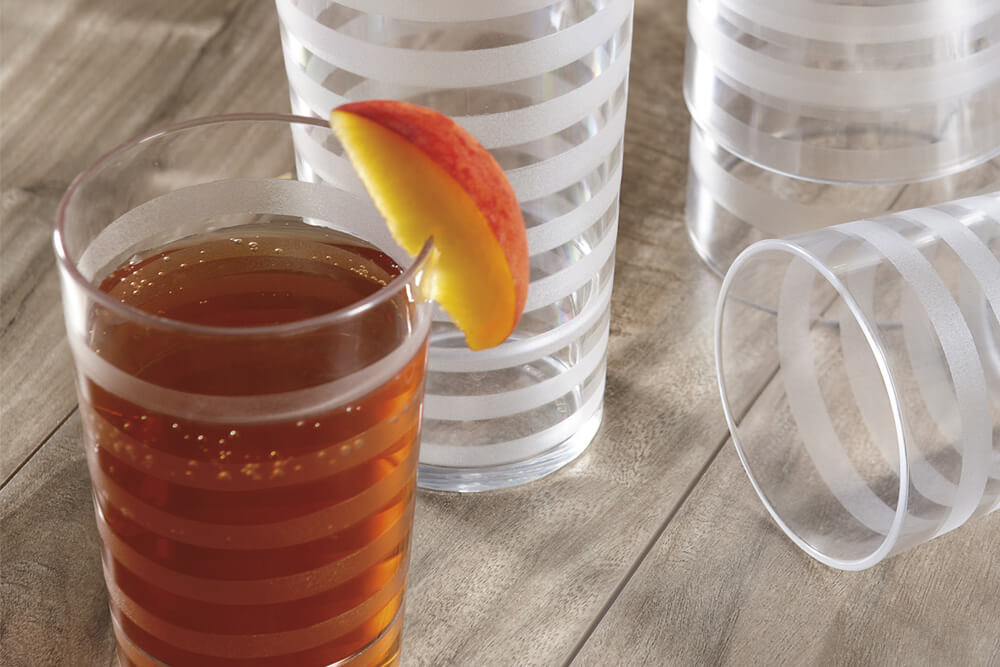
How to Clean Plasticware
Plasticware has become popular in foodservice for its light weight, variety of sizes and styles, and its cost effectiveness. And while plasticware is generally very durable, its appearance can be degraded and its useful life shortened if not maintained properly. No one wants to use a scratched plastic glass, right?
Tips on Cleaning Plasticware
- Should be generally handled like any fine glassware.
- Wash plastic drinkware immediately to maintain clarity and quality.
- Can be pre-soaked to remove protein build-up and cloudiness by using Dawn detergent.
- To avoid scratching, use only non-abrasive sponges and pads.
Recommended Plasticware Cleaning Products

#9000

#9030
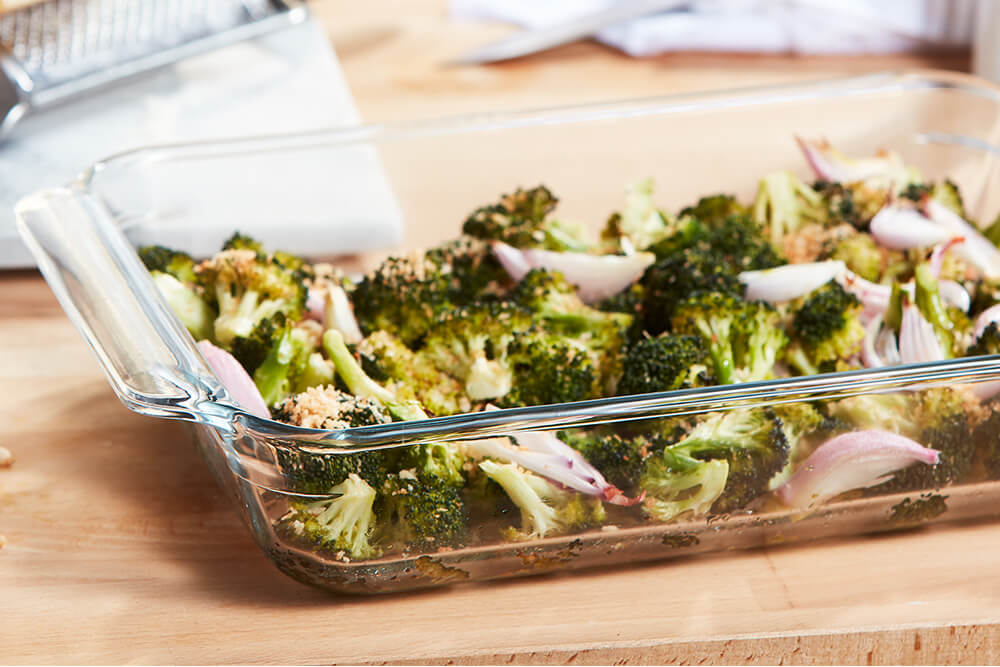
How to Clean Glass Cookware
Glass cookware and glass bakeware are popular choices for a number of reasons. A glass container takes a little longer to heat up than other materials, but retains the heat longer on average. Glass surfaces don’t have non-stick coatings that can be problematic. And glass is generally microwave safe. Plus, if you choose the right tools, clean up is a breeze with glass cookware.
Tips on Cleaning Glass Cookware
- Clean glass cookware immediately after use to reduce staining and protein build-up.
- Use light-duty, non-abrasive scouring pads that won’t leave scratches or scuffs.
- Rinse with hot water.
- Air-dry in a drying rack.
- Avoid drying with a soft towel since towels can carry bacteria.
Recommended Glass Cleaning Products

#2000HEX

#2020

#9000

#9030
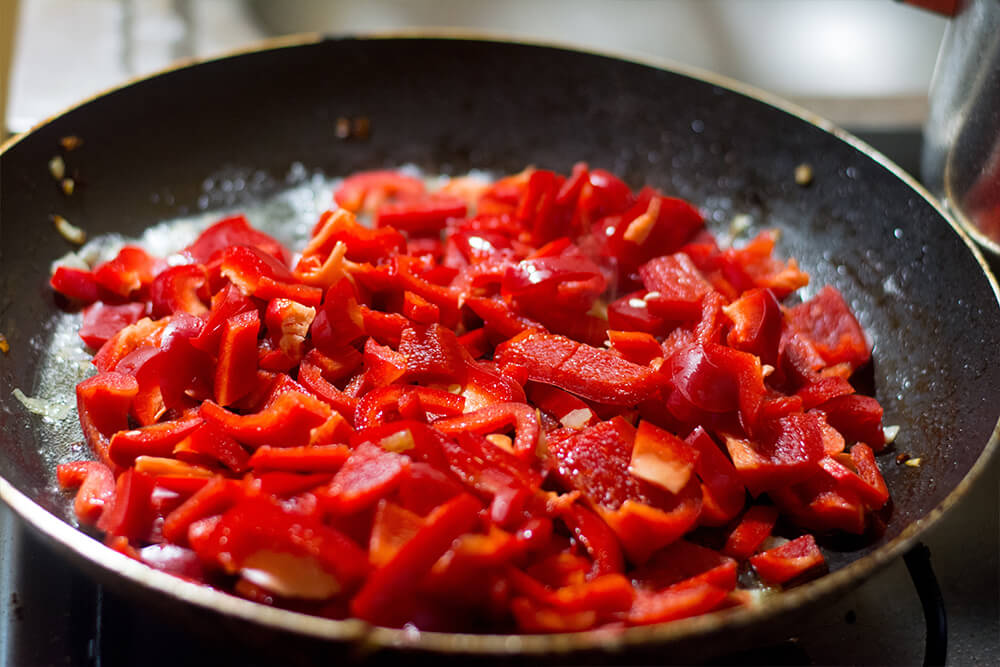
How to Clean Non-stick Cookware
Non-stick cookware can be a challenge because of the coatings used. But that just means that choosing the right tool is even more critical to protect your investment. With a little care, you can extend the life of your non-stick pots and pans by cleaning them the right way.
Tips on Cleaning Non-stick Cookware
- Clean immediately after use.
- Interior of pan should be scoured with a non-abrasive pad since that would take off pan coating.
- Exterior of pan can be scoured with an abrasive pad to remove carbon stains.
- Non-stick pans can be soaked and run in the dishwasher.
- Check the non-stick coating on your pan.
Recommended Non-Stick Cookware Cleaning Products

#2020

#9000
How to Clean Pots & Pans
For stainless, aluminum, stock pots, pans, sauce pans fry pans without non-stick coating, you might be tempted to just hammer on them with steel wool or stainless steel scrubbing balls. But these techniques can come with unexpected consequences. Fortunately, there are alternatives that get the job done right without the potentially damaging side effects of other methods.
Tips On Cleaning Pots & Pans
- Pots & pans without non-stick coating can be scoured with heavy-duty pads.
- Scotch-Brite #96HEX pads have raised dot side made specially for heavy-duty cleaning.
- Avoid stainless steel scrubbing balls in commercial kitchens because they can:
- Harbor food.
- Do not rinse clean.
- Grow bacteria.
- Break apart and attach to your pan or go down the drain or garbage disposal.
Recommended Pots & Pans Cleaning Products

#2000HEX

#2020

#96HEX

#96

#9650

#86

#88
Why Choose Scotch-Brite™ Scouring Pads?
Scotch-Brite scouring pads are made up of fibers that are uniformly coated in abrasive minerals. Other scouring pad manufacturers spray-coat their pads with abrasives, meaning only the exterior will have abrasive fibers. If you pull apart a Scotch-Brite™ scouring pad, the abrasive fibers exist throughout the entire pad, not just on the surface. This means that Scotch-Brite™ scouring pads will remain just as effective with every scrub.
This original post is sponsored by 3M.

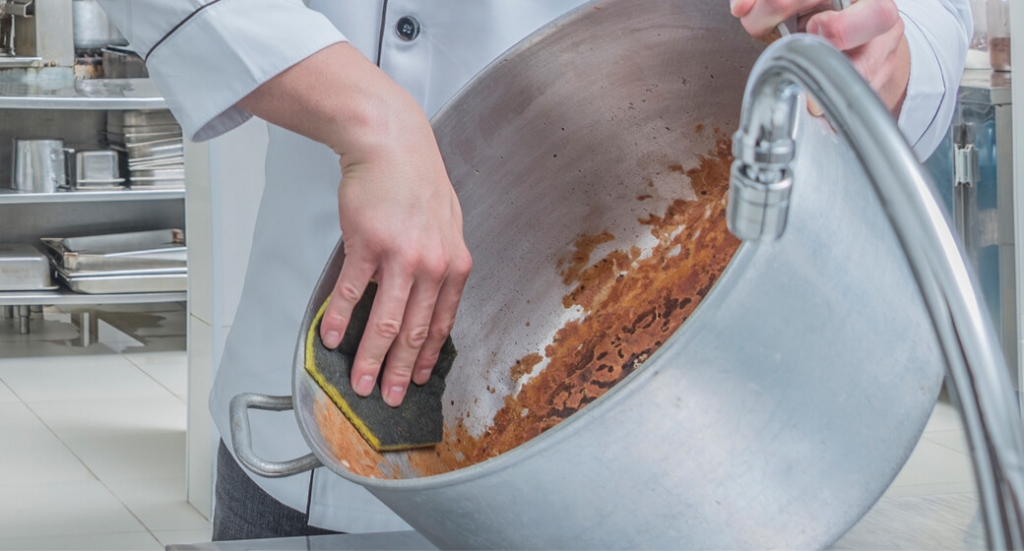


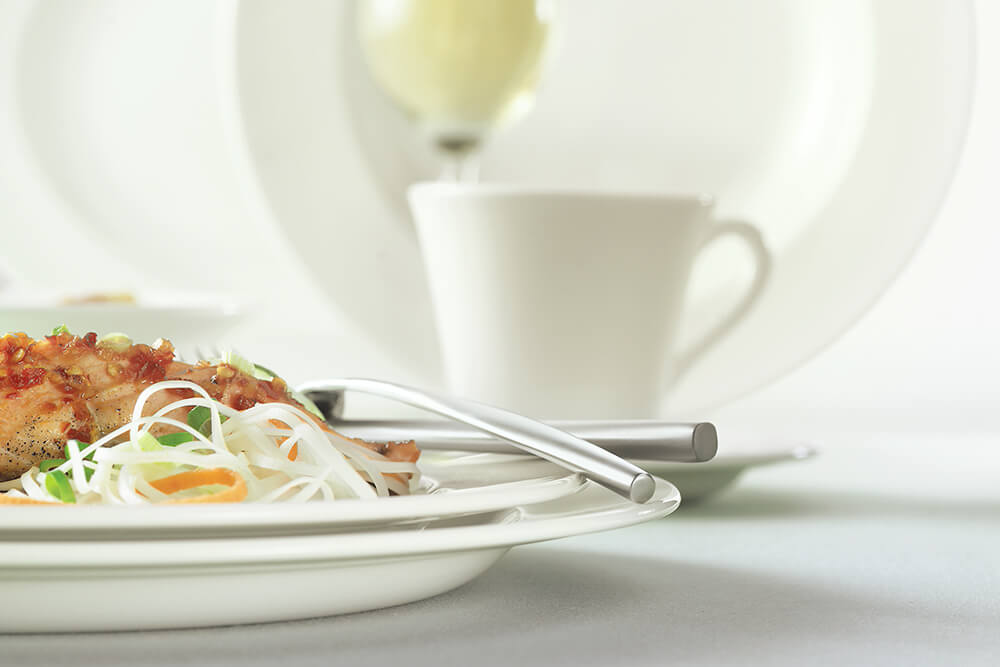
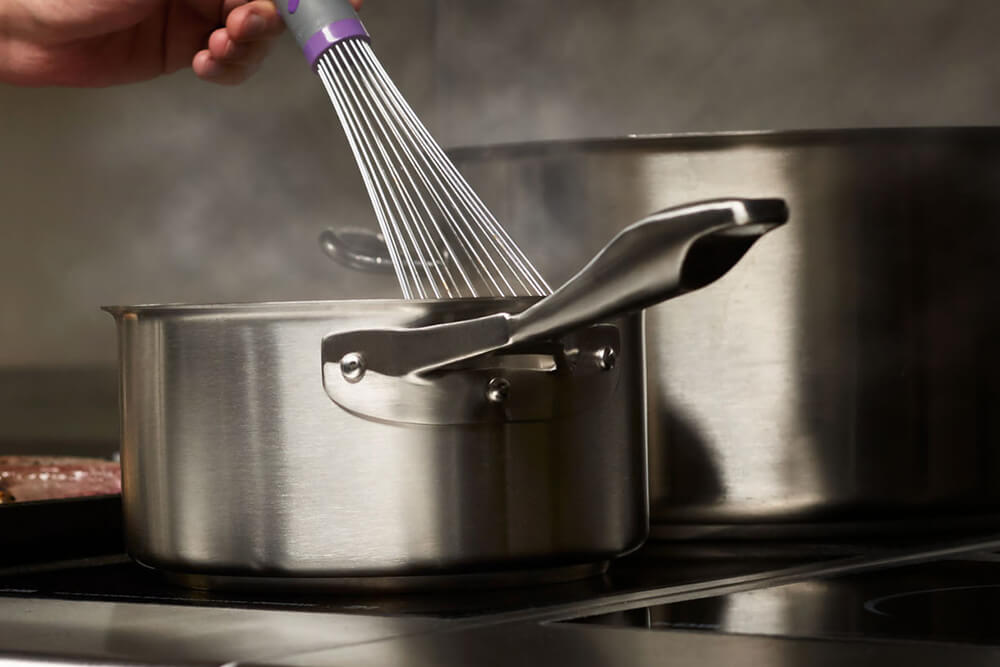

I was thinking.. then again I do have a T.B.I. but do they make the Scotch scrub pads to mount on a drill head, like the abrasive sanding ones?
Hi Kenneth!
Thank you for your patience – was looking into this for you. 3M does have scrub pads that mount onto drill heads! Please contact shop@wasserstrom.com with how many you need and any other requirements. Our customer service team will then reach out with some options and a quote.
Thanks!
What Are Scouring Pads Made of